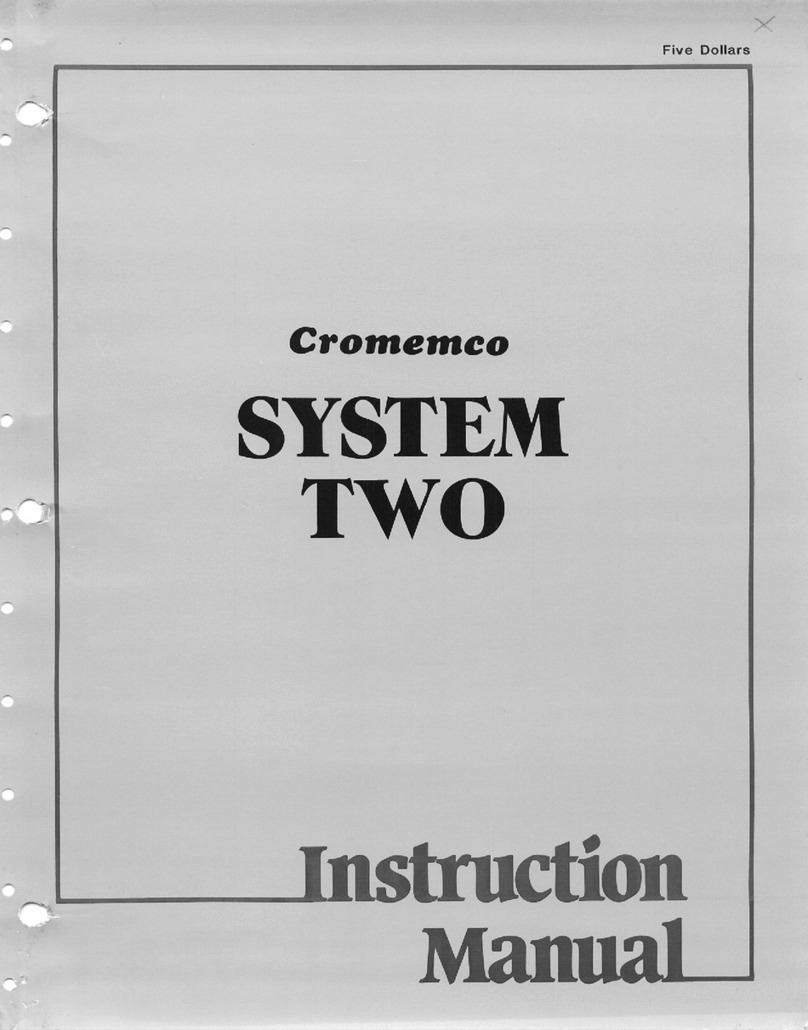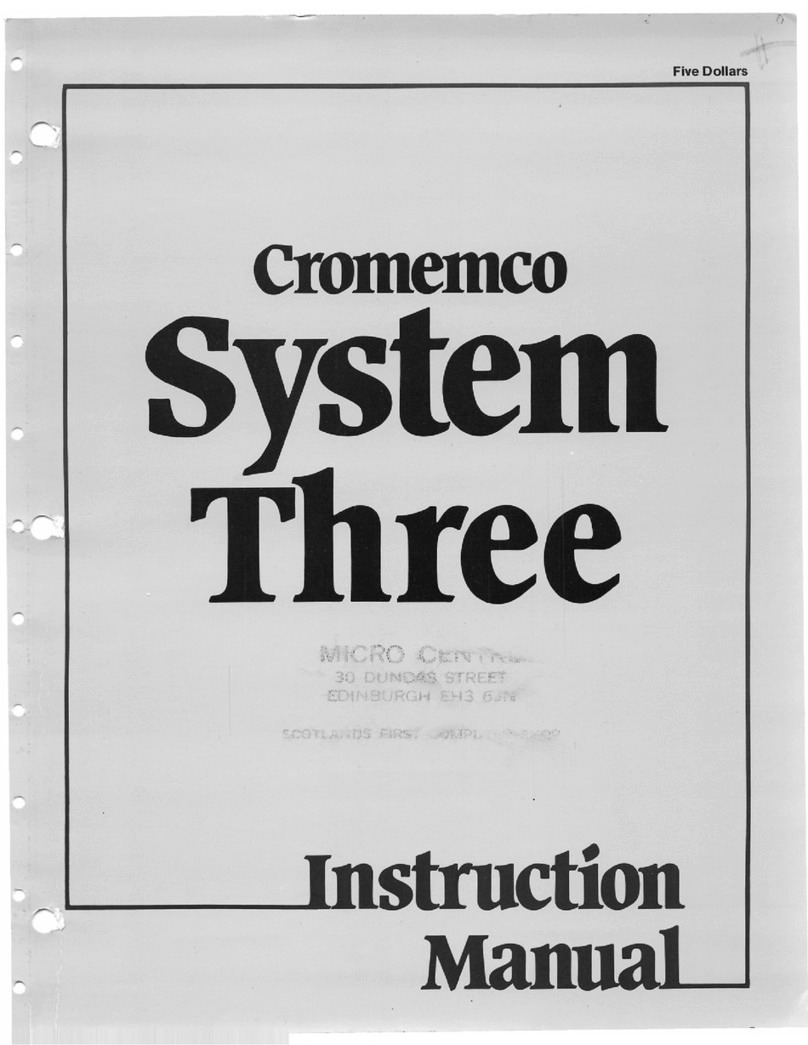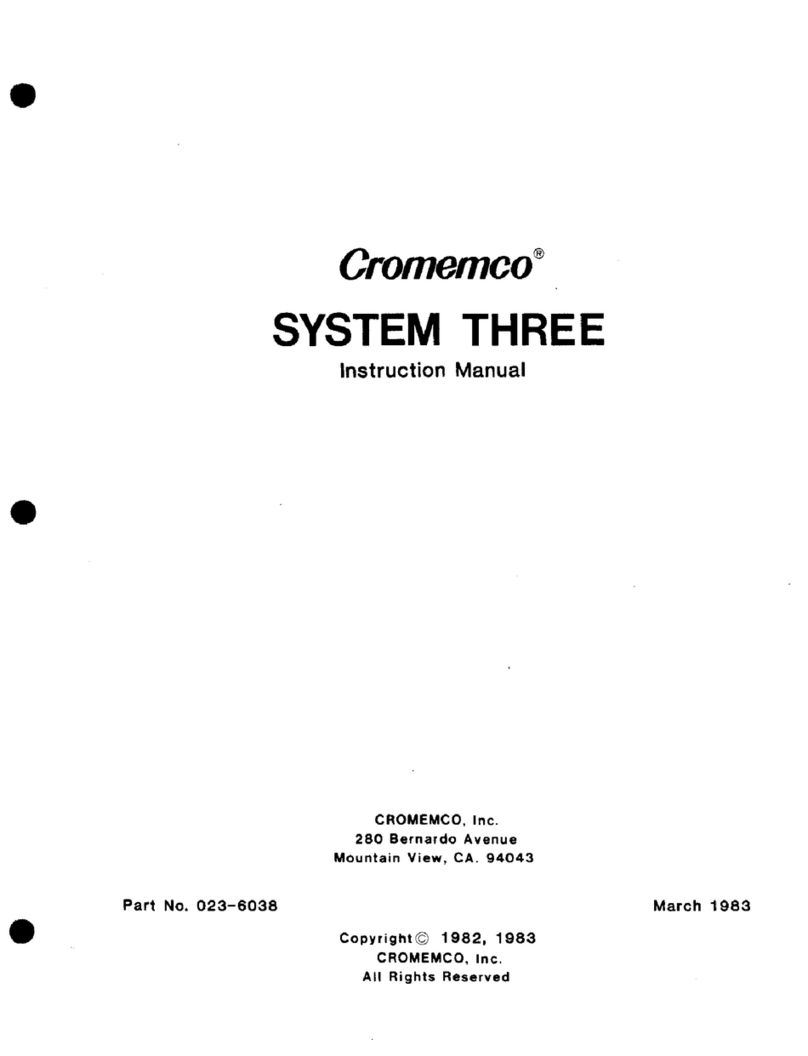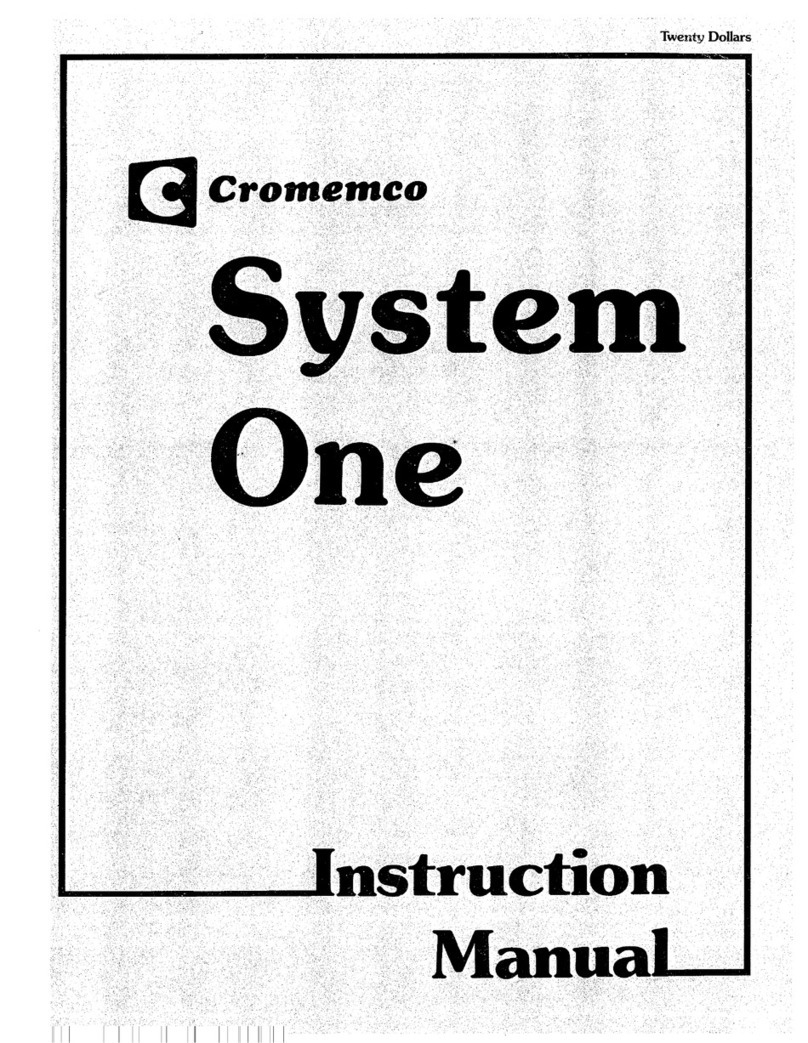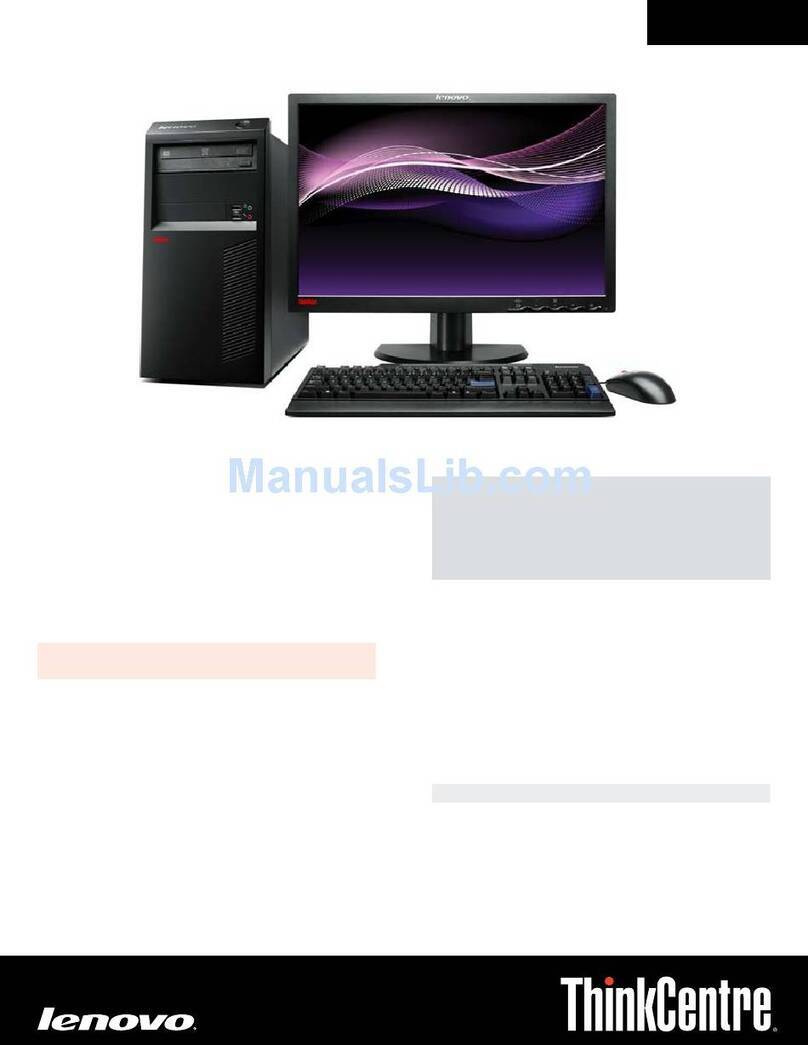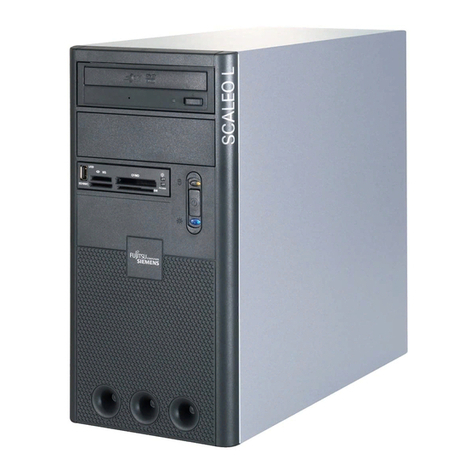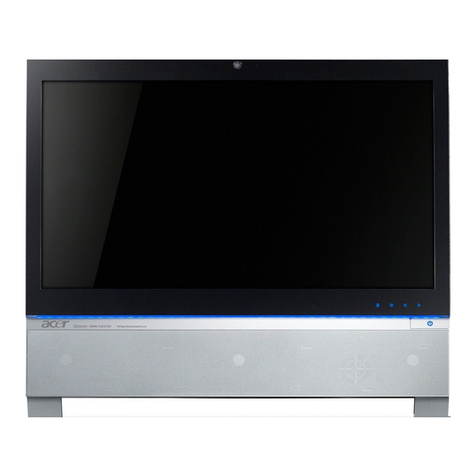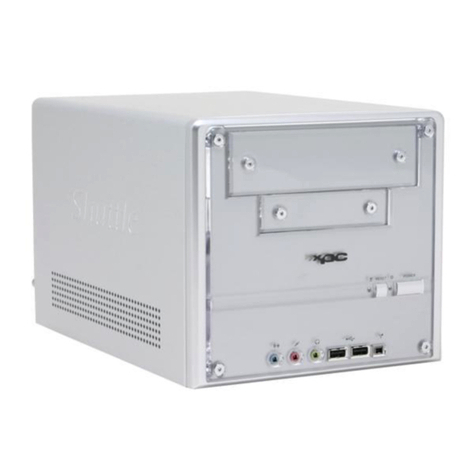Cromemco Dazzler User manual

FiVE
DOL!
ARS
........
II!.
······
••••
Ii.
ililirualilil lIanlill
[3
cromemeo
InCOrpgf~l.d
Speciali
•••
in
compule,~
and
pe,ipheral.
2UZ
CKULESTON
110.,
MDU~fAltoi
VIEW,
C"
94043

•
•
eTECHNICAL INFORMATION
eTROUBLESHOOTING GUIDE
eSCHEMATIC
and
FOIL DIAGRAMS
eASSEMBLY INSTRUCTIONS
(3
Cromemco
incQ,po'.I~<l
Special,,"
,n
(omputers
and
pelip~.,.I,
2'31
CHA~
LE
S
TON"
D
MOUNT
A
'N
',,(
'N
.
CA.
'Q.'
1

•
_D_IA_Z_Z_L_ER
~:=-
-==
g.::=
==~::
-=-
lCchnical
Information
•
•
Introduction
The
TV
DAZZLE
R®
color graphics module
provides ageneral
purpose
interface
between
your
computer
and
your
color
TV.
The
DAZZLER®
can
be
used
to
generate games,
animated
displays, educa·
tional learning drills
or
even light shows. all
in
full
color.
The
DAZZLER®
is
manufactured
by
era-
memco Inc.,
280
Bernardo
Ave.,
Mountain
View,
CA
94040.
The
DAZZLER®
is built
on
two
boards
design-
ed
to
plug
directly
into
any
computer
using
the
5-11313
microcomputer
bus. The video
output
of
the
DAZZLE
R® can be connected
directly
to
the
video
input
of
a
color
TV
set. By using
an
optional
RF
modulator,
the
DAZZLER®
can
be
conveniently
connected
to
the
antenna
terminals of
the
TV set,
rather
than
the
input
of
the
video
amplifier.
With
the
DAZZLER®
interface,
TV
games
that
are
either
unavailable,
or
available
only
in
black
and
white,
can
flOW
be
programmed
in full
color.
Afoot-
ball can
now
sail
over
a
bright
green
playing
field
under
the
software
control
of
your
computer.
Rocket
ships can
spew
red-yellow flames against a
brilFoantly blue sky.
Or
perhaps
you wish
to
chal-
lenge
your
computer
to
agame
of
checkers
or
chess
on
a
recl
and
black playing
board-again
generated
on
your
TV
screen
by
the
TV
DAZZLER®
inter-
face.
If
you
use
your
computer
for
business
or
ac-
counting
purposes,
the
DAZZLER®
interface
can
be
used
to
display
multi·colored
graphs
of
the
data
stored in
your
computer.
Your
computer
can
be
used
to
process and
format
the
raw
data
while
his-
tograms,
charts
or
graphs
of
the
data
are
displayed
on
your
color
TV.
The
DAZZLER®
interface
can
also
turn
your
color
TV
into
a
TV
terminal.
Alphanumeric
charac-
ters
entered
from a
teletype
or
ASCII
keyboard
can
be displayed
directly
on
the
screen
of
your
TV
using
our
DAZZLEWRITER
software
for
character
gener-
ation. Messages
can
also
be
generated
internally
in
your
computer
and
displayed-in
full
color.
Alpha-
numeric messages,
titles
or
comments
can
similar~
be displayed
in
conjunction
with
DAZZLER
games or
OAZZ
LE
R® graphic displays.
1
A
new
interface
board
from
Cromemco,
our
D+7A liD,
is
particularly
useful
for
inputting
analog
signals
for
use in
conjunction
with
the
DAZZLER®.
Analog signals
from
joysticks,
for
example,
can
be
input
to
the
computer
with
the
D+7A
module
for
use in
controlling
a
DAZZLER®-generated
display.
Another
use
of
the
DAZZLER®
interface is
in
computerized
instruction
either
at
home
or in
the
classroom. Word
recognition
tests, "flash
card"
arithmetic
drills, and
memory
training
can all
be
carried
out
with
the
excitement
of
afull-color dis-
play.
Games
can
be
interspersed
with
learning
exer·
cises
to
maintain
student
interest
and
enthusiasm.
(For
more
information
on
the
use
of
the
DAZ-
ZLER®
see
the
December
'976
issue
of
BYTE mag-
azine,
"The
Cybernetic
Crayon,"
pp.
24·29.
138-
141,
and
the
September
1978
issue
of
PERSONAL
COMPUTING,
"DAZZLER®
Graphics,"
pp.
58-72.)
Design
The
DAZZLER®
interface
is
a
very
advanced
design using
over
70
MaS
and
TTL
integrated
circuits
on
two
printed
boards.
Yet
the
DAZZLE
R@
kit
is
easy
to
build.
Aspecial varnish or
"solder
mask"
is used
to
guard
against
shorts
during
board
construction.
And
alegend mask is silk-screened
directly
on
the
board
to
show
precisely where
each
component
is
placed.
Only
the
highest
quality
parts
are
used
in
the
DAZZLER®
interface.
The
printed
circuit
boards
are double-sided glass-epoxy with
plated-through
holes
and
gold
plated
edge
contacts.
Ie sockets
are
used
for
all dual-in·line ICs. And
carbon
film resist·
ors
are
used for high-speed
operation
and
tempera-
ture
stability.
The
two
DAZZLER®
boards
may
be plugged
directly
into
two
adjacent
slots
in
your
computer.
A
16-conductor
ribbon
cable.
with 0 IP plugs
on
each
end,
is
used
to
interconnect
the
two
boareJs.
Alternatively
Board 2
may
be
mounted
"piggyback"
on
Board
1so
that
only
one
slot
is
required.
In
this
configuration,
seven
additional
jumper
wires
must
be used
to
interconnect
Board
1with Board
2.

n
'''ZZLER
-------
----
--
._n
=="-
_
-=~
__
=~_
=
~
_
Software
Cromemco provides software support
for
the
D.AZZLER® interface.
Two
basic software packages
are provided;
DAZZ
LE
R®
GAM
ES
and
DAZ-
ZI_ER® GRAPHICS.
The
DAZZLER® games
package
consists
of
a
Cromemco
DAZZLER®
Games
Instruction
Manual
and sixteen games (see box below) on either a
5"
diskette (model FOG-S), or
an
8"
diskette (model
FIJG-Ll. Either package
is
available
from
Cromem·
co, I
nc.
for
$95.
The
DAZZLER® graphics
package
allows the
u~:er
to
display graphs, graphics
and
alphanumerics
on
acolor TV set. It consists
of
a
DAZZlER®
Graphics
Instruction
Manual
and
the
graphics pro-
gram
on
either a
5"
diskette
(model DGR-Sl,
or
.~
an
8"
diskette
(model
DGR-L). Either package
is
available
from
Cromemco, I
nco
for
$95.
Operation
The
DAZZLE R® interface uses high-speed dir-
ect
memory
access (DMA)
to
read
the
memory
of
the
host
computer
and
translates the
information
in
the
memory
into a
color
TV
signal.
The
keyadvan-
tage
of
using
DMA
is
that
the
DAZZLER® can dis-
play·a
picture
white
at
the
same
time
the
computer
is
executing
either arelated
or
unrelated program.
Only a
15%
slow-down
of
the
computer
execution
is
realized during
the
DAZZLE
R®
operation.
•
•CHASEI** -
the
cross chases
the
circle.
•DAZZLE DOODLE* - draw a
picture
using a
joystick.
•
DAZZLE-MAnON
-for
creating
animated
displays.
•MAGENTA MARTINI -an amusing DAZ-
ZLE-MATION example.
•
DOGFIGHT**
-an aerial
battle
game.
•
40
TIC-TAC-TOE - a
4D
extension
of
TIC-
TAC-TOE.
•
GOTCHA!**
-
two
players vie to
occupy
territory.
•KALEIDOSCOPE -for captivating color dis-
plays.
•LIFE -
an
instructive game
by
John
Conway.
•
XLlFE
- a particularly
attractive
LIFE dis-
play.
•SPACEWARu-acosmic
fight
to
the
death.
•
TRACK*
-maneuver
through
a
difficult
maze.
•DAZZLECHESS -play chess
with
atireless
opponent.
•AMBUSH * - take
pot
shots
at
an
enemy
con·
voy.
•
SOLO**
-plays a
tune
on
the
JS-'
console.
•TANK WARH-
tanks
fight in amine field.
Requires asingle
JSl
joystick.
** Requires
two
JS·l
joysticks.
2
•


DAZZLER =-
=_-::.
---
_-::.
=-=
===
_
___________
~=-==
=====E:===-===
--
---------
also be turned off manually
by
depressing
the
"clear"
sNitch on the computer
front
panel. The
remaining seven bits
of
output
port
0EH are used
to
set
the
starting location
of
the
picture
to
be display-
ed in the
computer's
memory. As will be discussed
below,
the picture may require
512
bytes
of
mem-
ory
or
21<
bytes
of
memory
depending on
the
mode
in
which
the
DAZZLER®
is
operating.
In
any
event,
this
must be static
memory
with
an
access
time
of
,microsecond
or
faster. Asummary
of
the
use
of
outpa!
port 0EH
is
shown
below.
Bit
07
is
not
used. Bit
06
is
used
to
set
normal."
resolution (32 x
32
element
picture
tor
512
bytes
or
_
64
x
64
element
picture
tor
2K bytes)
or
resolution
X 4 (64 x
64
element
picture for 512
bytes
or
128
x128
element
picture
tor
2K
bytes). Bit
05
sets
the
amount
of
computer
memory (starting
at
the
loca-
tion
given
to
output
port
0EH) allocated
to
the pic-
ture. When
D5
is
"1,"
2K bytes
of
memory
are used.
When
05
is
"0,"
512
bytes
are
used. Bit D4
is
used
to
select between a·black·and-white display and a
color display. Bits
03-00
are used
in
resolution X 4
mode
to
set
the
color
of
a
color
picture
or
the
inten-
sity
of
ablack-and-white picture. Bits
03-00
are
not
used
in
normal resolution mode.
~
'(ro.'
,;;t
'-/.""
-,...
~
..
'
_I
\i
••
~
,~
->
- , •
~
MSB
LSB
Only
two
bits
of
input
port
0EH are used. Bit
07
is
low during
odd
lines and high during even
lines. Bit D6 goes low for 4
ms
between frames
to
indicate
end
of
frame
.
,
_07~
~
'.T:-
c1)..!'t.
_".h'l:tj:'
'O','
1,'.:
~,\1'
,a)-
-f:i,Q;l]o
~.~
--
--,-_.~
-
._"-~"
STARTING
ADDRESS
OF
PICTURE
Output
Port
DEH
Output
port
0FH
is
used
to
set
the
format
of
the
TV picture.
The
function of each
of
the
eight
bits
of
this
output
port
is
shown
in
this table:
07
_
Not
u>ed.
06~1
_
R.""lu,ion
X4.
calo.
~nd
intensity
..
t
by
D4
to
DO,
D6~O
_
No'm~1
....
olulion_
(32)(32
for
S12·byte
plctuo
•.
64X&4
10'
2~·by,0
p;cluro.)
Color
and
inlonsity
of
each
pi<1u"
ol.m'nt
..
I
by
4·bit
wo.d.
,n
Ihe
OOmout.r
momof)'.
05~t
_
Pi"tu,"
In
2K
bY'e>
01
memo'y.
D4~O
-f11.ck-and-Whlto
pictu,o.
~
D4~1
-
Colo.
p'CIU
••.
---,,-
~
r~
"
D3~1
_
Hiih
intons.ly
colo..
In
,,,,,,Iulien
)(
4
black-
and-whit.
mod
••
D3 is
II
••
D3~O
-
Lcw
i"'.mily
colo..
mD,to;Qn,licant
bit
of
4-bit
;nt.n.ity
etm1to(
D2~1
-
BI""
,,"o<d.
Dlet-Gleon
Bit
DO
iotho
10'"
DO~O
_
N<,
ted
,ipniliconl
bil_
Output
Port
OFH
4
1
Only
Two
8its
of
Inpur
Port
Jr~
U.ed. j•
'---------
In
order
to
generate
aTV picture
with
OAZ-
ZLER®,
the
information
that
the DAZZLER(;)
reads
from
the
computer
memory
must
be
properly
formatted.
In
resolution X 4 mode, each point
all
the
TV screen
is
controlled
by
just
one
bit
in
the
computer
memory. When
that
bit
is
a
"1"
the cor-
responding element
of
the
picture
is
on. When
that
bit
is
a</0" the
picture
element
is
off.
In
resolution
X 4
mode,
the
color
and intensity of
the
picture
is
set by
bits
00
to
03
of
the control
word
at
output
port
0FH.
For full color
in
resolution X 4 mode,
multiple frames
of
different colors
must
be
intel--
leaved.
In
norma! resolution mode,
the
color and inten-
sity
of
each
element
of
the TV picture are
contra
-
led by afour-bit
"nybble"
in
the
computer
memory.
Two
elements
of
the
picture
are
thus
stored
in
eacn
byte (8 bits) of memory. (For this reason, a64 x
64
picture in normal resolution
mode
requires
2K
of
memory.)
The
lowest order
bit
of
each nybble
(00)
•
determines
whether the corresponding element
of
::
the
picture
contains red
(1)
or
no
red
{0l. Similarly,
D1
controls
green,
02
controls blue,
and
D3
sets


DAZZLER
---==_~::.=
_-=-::.=
_-=-_-:.
-
------------_--...:=-=
========:=:::==
----------
Using
Two
DAZZLERS
In
Your
Computer
If
you
wish
to
control
two
TV
sets
simulta-
neously,
you
can
use
two
DAZZLERS@
in
your
computer
at
the
same time. To
synchronize
the
DAZZLERS®, remove
the
jumper
wire
connecting
"SYNC
IN"
to
"G"
on
Board 1
ofoneoftheDAZ-
ZLERS®. Now
connect
"SYNC
OUT"
from
the
other
DAZZLER®
to
the
SYNC
IN
pad
that
used
to
be
connected
to
"G".
The
two
DAZZLERS@
are
synchronized
with
this
connection
so
that
they
may
be
operated
simultaneously in
the
same
com-
puter.
Test
Program
The
following program
is
useful tor testing
the
o~eration
of
the
DAZZLE
R®
and
is useful
for
ini-
tial tune-up.
To
operate
this
program
you
must have
a":
least
2K
bytes
of
memory
beginning
at
location
zero in
memory.
The
test
program and
tune-up
procedure
makes
use
of
the
front panel switches
(at
input
port
FF)
of
the
Cromemco
2-1
computer.
This program
begins
by
putting
the
bit
sequence
e:
"10000000" into
the
accumulator
and
outputting
it
to
port
0EH,
This
turns
on
the
DAZZLER®
and
tells it
that
the
picture
that
it
is
to
display begins
at
location zero
in
memory.
Next
the
program
uses
the
front
panel sense switches
to
set
the
control
word
sent
to
output
port
0FH,
This
allows
the
user
to
experiment
with
different
output
formats
and ap-
preciate
the
fantastic versatility
of
the
DAZZLER®
display, When sense switch A
12
is
raised
the
DAZ-
ZLER® goes
into
color
mode,
and
acolorful quil1-
hke
pattern
will
appear
on
the
TV
screen.
Tune
Up
The
tune-up
procedure
for
the
DAZZLER®
is
straightforward.
Begin by loading and running
the
above
test
program. Raise
SSW
A12. Adjust R29 for
astable
picture
on
your
screen, Now raise SSWs 10,
11,
12,
13,
14.
Adjust
e17
for
the
brightest
blue
color
on
your
screen. Now lower
SSW
A
10
and
raise
A9.
Adjust
R28
for
the
brightest
green. Finally
lower
SSW
A9 and raise
SSW
AS. Adjust R27 for
the
brightest
red.
The
tune-up
of
DAZZLER®
is
now
complete.
•
r
MNEMONICS
COMMENTS
.t,OOR
OBJECT
(,lr;lGO
3EB0
TEST'
LD
A.8GH
;
100000008
TO
REG, A
00132
D30E
OUT
0EH,A
;
OUTPUT
TO
PORT
\IE
l.lG04
DBFF
IN
A.0FFH
;
INPUT
FROM
SENSE SWITCHES
1J1J06
D3r;lF
OUT
0FH.
A;
OUTPUT
TO
PORT
0F
Q~r;lr;lQ
JP
TEST ;
REPEAT
6

DAZZLER SCHEMATIC
-Board
No.1
,------F====--
-
."
01d'
,--'F===l==~~:
~o
_L""J:'
...
,
l,.
",
~';:O
~
,,'
~.
I
~'~::;::
~'
..
~
," -
o
.
------"
It----------I---I---+-------l--
:---=:
I
--
---t::-: :
ct:
~
,---------+----+1=--
-~-,
:
!=~r:,,~c
1Ff~!I'~:"tJ'~
~
I
~~
If
I~~I"
b
'1i~!t
.,
~,.-
•
fiI1~~
~
!lII..,,,-
L...J--
~'I2::':I==:E:
;;'oM' ltt
.f.l~
IT!...:;
·1
,~::I
b:
.,
f-:::----=--'D'-[~
~
l'
l'
1-""
,"
' • ,,":'-
• L
r.r:_
f)
7

..
".to
.~~,
..
,
"
"n..,,,
.".
,~.
,.
.'
T
"
".
~~l'-.--"C,~,.,D"
"
-
~"
---
f
to,
I"""'"
sf - -
~.~~
=o..:.r'"
'"
','
,
",
""
......
,
--
.
-
~~~-
~-=F-
::,~
,,
~r:L-±e"-'~~-+--_,
_L_+-~
oI
o
o
o
o
c
.
L+-b",·
..
:
-~,
"J:n
8

FOIL
DIAGRAM
Board
No.1
9
•
•
•

•••
..,
ii_liil'
fillDillllll1
D:l0
111ll11111111'c~
1111111111111111/~1111111111
!
111111111111111
o
r=
111I111111111
Ijllllllllill
Ql
.~·r"-2
•
.,
C
o't'
•
~
Q"
-
0
Z~
I.1-1
IIIIIIIIIII~II!
illllll~lIIrl(
aTilllllOlllltti!OlllllllDIDII
oto)
•
:II
N~
3:
I_
II
\\\\11
c~
Ii

•
lI
,
,
~etJ.
'[)~
T~.
BOARD
No.2,
Rev
C
U,S,PAENT
PENDING
COPYRIGHT 1976
BY
CROMEMCI)
IWARNI,~
COMPONENT
MATCHING
ESSENTIAL
"
..
,,_
....
,
..
..
.
...
','
..
'
L'I;;"C'
",u
.-w"'"'
L---+-,:::::j====:i-------"G:'"
--'--~
-+-------==
•
'n
8"
~
..
,- -.
.
~
..
,.
"',,
'"
-8-fj;»++1
-8-"8:
4++
l
"
.,
",
..
..
'
",
.,
l
L=_-
'"
."
....
~
'..
.
"'~
DAZZLER SCHEMATIC
Board
No.2
11

ASSEMBLY INSTRUCTIONS
tThe
Jss('mbly
of tile
DAZZLER
™
kit
requires
about
onl;
evening,
All
components
are
muunted
011
the
component
side
of
the
pc
boards
and
soldered
to
the
toil
on
the
opposite
side. Be
sure
to
use
high-qualllY
rosin
cure
solder
for
the
assembly
and a
fiOlHipped
low
waltag"
solder;n~
iron
Ie
sockets
must
be
used
for
all
les
(except
for
the
voltage
regulators
le1
and IC38).
To
tacilit.ltt<
the
assembly
of
your
DAZZLER
kit,
the
part
number
of
evu'l
component
is
prinlec.J in
position
on
the
com-
ponent
side
of
each pc
board.
The
follow;,ng
>yrnbols
are used
on
the
pc
boald
the
cJpacitor
with
a
pair
of
n~edle-nose
pi,e's
before
inserting
it.
o
Solder
in
I-Josltion the di,c:
("ramie
capacitors
CIS
(180p"),
C19,
20,
21
(560
pF),
e22
(,0011.
C23,
24
(220
IlFj:
CIS,
26
(.001),
e27
(56 pFI,
o
Solder
in
place
asmall
jumper
wire,
as
shown.
tetw~en
~he
pads labeled
"IN"
and
"G"
on the
opposite
sid"
(,j
trp
board.
o
Solder
in
place
the
inductors
L i and
L7.
The
ind\Jctors
and
L2
Me
Identical.
o
Solder
in
pOSition
th~
%
w~tt
5~;'
cMDon
tilm
r.;slstors
Pl·
R26,
IJ SolcJer in
pJ~jtion
the
three
50LJ·ollrll
nllrliatur~
pc,tentio
11-
eters R27,
RiB,
Jnd R29,
Tl1es~
(tlr"e
poteritiorTeters
d
..
identical,
Solder
in plac!.'
the
1N5242
Zener
diode
(Dll
taking
\';11<;
to
position
the
cathode
end
at
the
diode
to'
....
Md
t:-JC'
top)1
thc
pc
board.
The
cathode
end
of
the
diode
I,
marked
'
....
;1,
,1
hal1cl.
Solder
in pO';ltilJrl
transistors
02
and
03
{2N390·\)
T~k"lrJ
care
to
pOSition the
flat
face
ot
the tranSIStors
IL'Nilt,j
tl~
bottom
of
the
pc board
o
o
Solder
in
PO~ltlon
transistor
01
12N3906)
takin!] cat'e
to
position
the
llat
tace
of
Ihe
!raf)~i\tQr
toward
tr,e
top
d
the
pc
boar:!.
[l
Solder
in poSitlO1l
diode
[)2
{lN9141.
Take
PIC
10
Ullr,\
tllC
diode
!.o
that
the cathocJe
(banded)
end
1\
to'''''''.1
\I',f,
top
at
the
board.
S(Jldr'r
in
place
the
3579.545
KC
cryst,,1 IXf,i.,L.1
I,,'
cry~(;i1
;hodd
be
mechanically
secured In place
b,
"'-lr11-,'1
Jsmall piece
at
bare Wife
tronl
the
pad
just
Ul1UP.I
:w
cry;tJI.
over
the top
at
the
cryst"lto
the
pad just
i,t,(",~
:
ll'
crystJI.
The
wire
should be
pulled
tight
and
soldel"J
It
c3cll
r<3d,
LJ
',nsen the ICs
from
envelope
No.1
into
their
sCGkrh
,)1',
Board
1.
h'ke
spe6al
,'cne
tn
'iN
Ihll
<'vcry
Ie
is
;',uPc""
,;,i<,III"'/
il! its
Sinker
(1'1,1
th'l!
<"lei)
1''''
(i/ ,>:'cry
fl'
"pro;'-
,'rfy
""1"',I;",{
ill
/11
('
«H:lid
11
Assembly
of
DAZZLER
Board 1
'09
n
Sokler
,11
position
Ie
sockets
for
IC52
through
37
Solder
a
16
pin
Ie
socket
Irl
the
position
labeled
"TO
BOARD
I~O
:!"
o
With
a
Iwatsink
mourl\erl
between
le1
(LM340T-5.0
voltage
regu'l~tQrl
and the pc
boord,
:;ecure this IC
in
position
'Jsing
6·32
hardwar~
Solder
the
three
leads
in
place,
"
Solder
in
positiofl
CdPdc',tor~
Cl·CI4
{O,lJ.lF d,,,c ceramic
capacitors),
Assembly
of
DAZZLER
Board
2
o
Solder
in
position
Ie
,;oGkets
lor
IC,
39
through
7,1-,
Solder
a
16
rin
Ie
sock~t
in
the
position
IJh,'Ic'l
"TO
BOARD
NO.1",
Do
not
sold~r
IC
,;ock~t
in
the
PO,;ltlon label,·d
"NO
IC",
Solder
ill
position
1,1\('r
cap,lcitor"
C15 and C16
taking
care
to
orient
the
POSltlH
(!
I
kdU
[)f
edCI1
Cd!lJCllOr
towards
the
bOltom
of
the
pc l'Qar(1
Solder
in
position
the: 'Jilrlal)le
(~I'JC,IGr,
C17
Note
that
the
lead
on
the
capaciF-,r m:,rk!;d
with
an
arrow
(Joes
',11
the
hok
location
hrthe~t
from
the
XTAL.
lithe
capacitor
do~\
110t
t,\
easily
IntC)
its
mountlnCj
holes,
gently
crln1fj
tile
I('J,h
0"
n
With
a
h~lhirlk
mOlJfll"d
L.eTwe~r,
IC33
I,LI,1:l401·50
voltage
regJlatorl
Mill tl)e
1'(:
IJuarcJ,
'.ecUie
'<Ilis
Ie
'11
position
using
632
hilldware.
Solder
the
thr~e
iead,
II
place
U
S(ll<jr"
in
~cl\lllorl
capacitors
C23·C39
{G.1
ilr
j,sc
III
aIllL(',j
12

oSolder
in
position
the
filter
c~pacitors
C40
and
C41
taking
care
to
orient
the
positive
(+l
lead
of
each
capacitor
toward
the
bottom
of
the pc
board.
oSolder
in
pOSition
R30,
a
1K
~.-watt
5%
carbon
film
reo
SIHor,
oSolder
,n
po~ition
the
seven
port
selection
jumper
wires.
The
Jumper
wires
should
connect
pad
J1
to
Jl;
J2 to
J2;
J3
to
J3,
etc
oInsert
the
ICs
from envelope
No.2
into
their
sockets
on
Board
2.
Take ,Ipcn'll
f,1r,'
10
see
that
evcry
Ie
i,
properly
oriented
in
its
50cket
and th.l/ each pin
of
evcry
Ie
is
l'rop-
erly frJjiajicd
in
r}Jt'\ljdq'/
Interboard
connection
~l
A
16·conductor
cable,
with plugs
on
l'~Ch
end,
is
provided
10
connect
Board 1to Board 2. The
cable
should
be
plugged
into
the
socket
labeled
"TO
BOAR D
NO.2"
on
the
front
of
Board 1, be
routed
over the
top
of
Board 1
down
the
front
of
Board 2
and
into
the
~ocket
on
Board 2
labeled
"TO
BOARD
NO, 1".
TV,
connection
C A length of
RG174/U
cable
is
provided
to
connect
the
Dazzler to your
TV.
The
center
conductor
01
the
cable
should be soldered
to
the
terminal
labeled
"OUT"
on
Board
1
(i,ee
Note
below).
The
sh,;eld
of
the caule
should
be
soldered
to
the
adjacent foil ground.
The
other 'Jnd
of
thiS
cable
can be
coupled
to
the
input
of
the
Video
amplifier
of
a
TV,
If
you
prefer
to
connect
to
the
antenna
terminals
of
the
set
rather
than
to the video amplifier input, aRF mod,
ulator
is
required. The
most
cost-effective
modulator
that
we know
of
is
the
Pixieverter available for $8.50 from
ATV
Resparch,
13th
and Broadway,
Dakota
City
Nebr;lsb
68731.
NOTE:
The
TV
"OUT"
pad
IS
10caleoJ ,,1 the Lipper rlyht
corner
of Board
1.
Do
not
confuse this with
the
SYNC
output
near
the
center
of
the
boarJ,
oBefore using
your
DAZZLER, carefully
In~pect
\lour
work,
The
notch
on
every
Ie
should
be
on
the
left (with
pin
1of
each
IC
toward
the
lower left),
Be
sure
that
all
cumponents
are
in
the
proper
positions and
properly
oriented
Also
check
to
be
sure
that
you have installed the
\I1~all
jumper
wire
shown
near
the top
of
Board 1.
For
Inltruction>
C)n
tuning
up
your
Dazzler r'lfer
to
page 4
of
this
IndrlliJI
Service
If
for
any
reason
you
need service
on
your
DAZZLEI'l
you
mdY
return
the
DAZZLER
to
Cromemco
along
with
acheck for $35,
The
$35
covers
the
cost
of repair, tune-up, and retul'll postage,
We
reserve the right
10
not
repair
any DAZZLER
thC!
we iud9c
to
be
unserviceable, •
Resistor Color Codes
10 BROWN -BLACK -
BLACK
-GOLD
39
ORANGE
-WHITE -
BLACK
-
GOLD
150
BROWN -
GREEN
-BROWN -
GOLD
220
RED -RED -BROWN -GOLD
270 RED -
VIOLET
-BROWN -GOLD
330
ORANGE
-ORANGE -BROWN -
GOLD
470
YELLOW -VIOLET -
BROWN'-
GOLD
820
GREY
-
RED
-BROWN -GOLD
lK
BROWN -BLACK -
RED
-GOLD
1.5K BROWN -GREEN -
RED
-GOLD
7.5K
VIOLET
-
GREEN
-
RED
-GOLD
9.1K WHITE -BROWN -
RED
-GOLD
10K BROWN -BLACK -
ORANGE
--
GOLD
15K BROWN -
GREEN
-
ORANGE
-~
GOLD
18K BROWN -
GREY
-
ORANGE
-
GOLD
30K
ORANGE
-BROWN -
ORANGE
-
GOLD
36K
ORANGE
-BLUE -
ORANGE
_.
GOLD
62K
BLUE -
RED
~
ORANGE -GOLD •
13

__
AS_S_E_M_B_L...:.¥_I
__
N_ST
__
R
__
U.:..C_T:...:.IO.:..N:...:.S
~:
~
-=
~
;
~
--c
=
~
~_-;,
-=.
•
DAZZLER
Kit-Packing
List
•
Envelope
No.1
Ie,
Board 1
13417
1LM340T·5.0
47400
27404
1
74LS04
37408
47410
27420
1
7430
27432
37473
27474
174LS75
27493
,74151
374157
274161
274175
Envelope
No.3
Capacitors
1
56
pF
1
180
pF
1Variable
2
220
pF
3560
pF
3.001 pF
260.1}JF
4
10J1F
Envelope
No.5
Misc.
2Heatsinks
2
No.6
screws
2
No.6
nuts
1
2N3906
22N3904
l1N914
1 1
N5242
1
Crystal
Other
Envelope
No.2
Ie,
Board 2
1
lM340T·5.0
17402
27404
574LSQ4
37405
27408
1
74lS0B
174lStO
1
74lS30
.1
74LS32
37474
37475
27483
37493
17495
174157
274175
474367
Envelope
No.4
Resistors
11Dahms
1
39
1150
1220
,270
3330
1
470
3500
(pot)
1820
31K
11.5K
17.5K
,
9.1
K
410K
315K
118K
1
30K
136K
162K
EnveJoplI
No.6
Inductors
222
pH
(Lt,
L2)
•1
16
conductor
interconnect
cable
1
6'
length
of
RG 174/U
co~x
cable
1DAZZLER
Insu'Jction
Manual
2516
pin
IC
Sockets
124
reqdl
50
14 pin
IC
Sockets
(50
reqd)
14

Other manuals for Dazzler
1
Table of contents
Other Cromemco Desktop manuals
Popular Desktop manuals by other brands
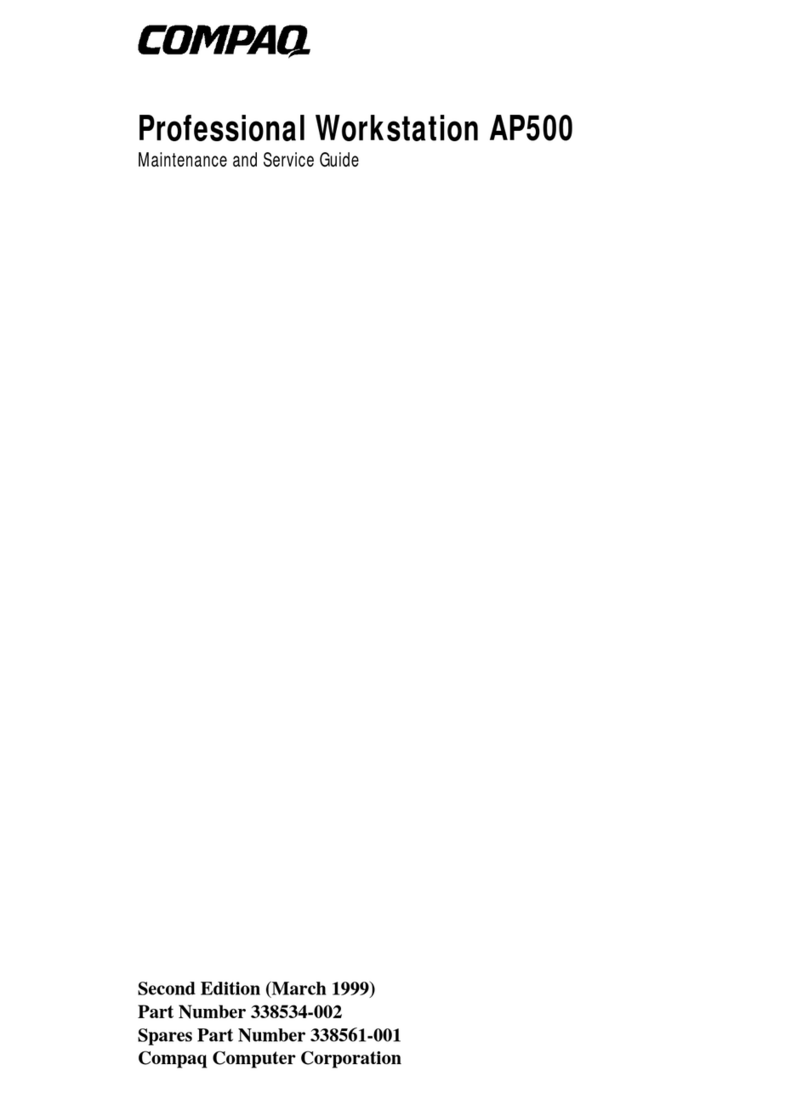
Compaq
Compaq Deskpro AP500 Maintenance and service guide
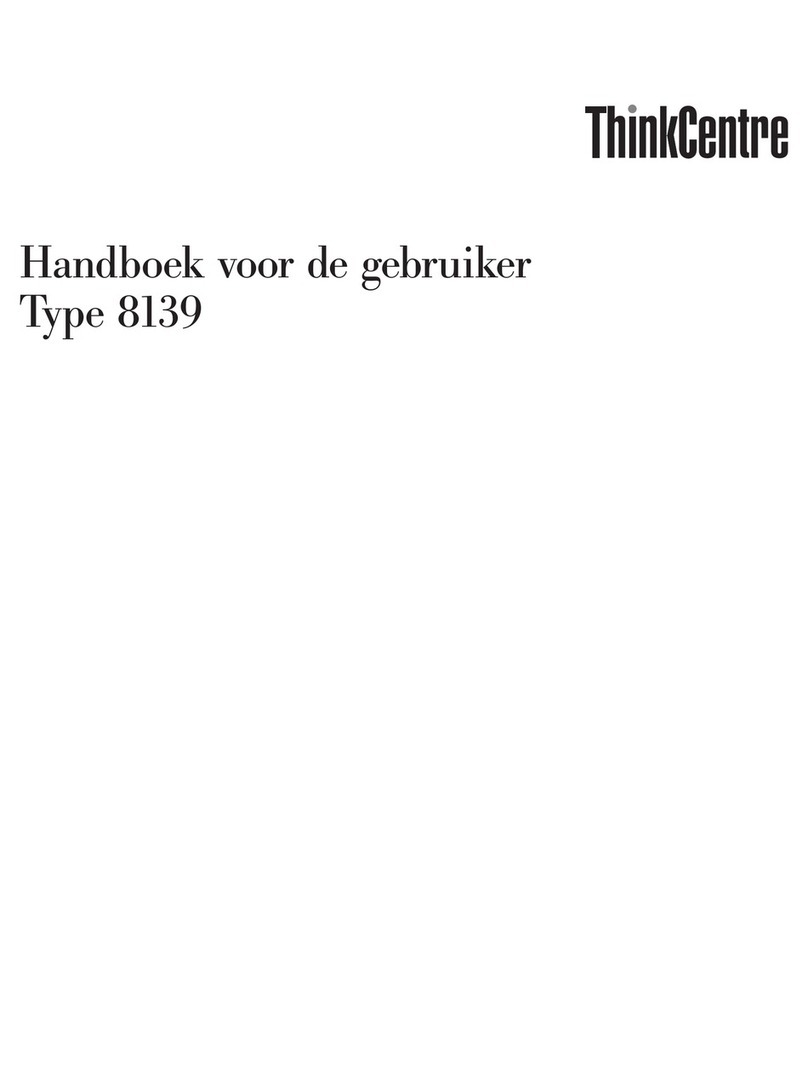
Lenovo
Lenovo ThinkCentre A35 Handboek voor de gebruiker
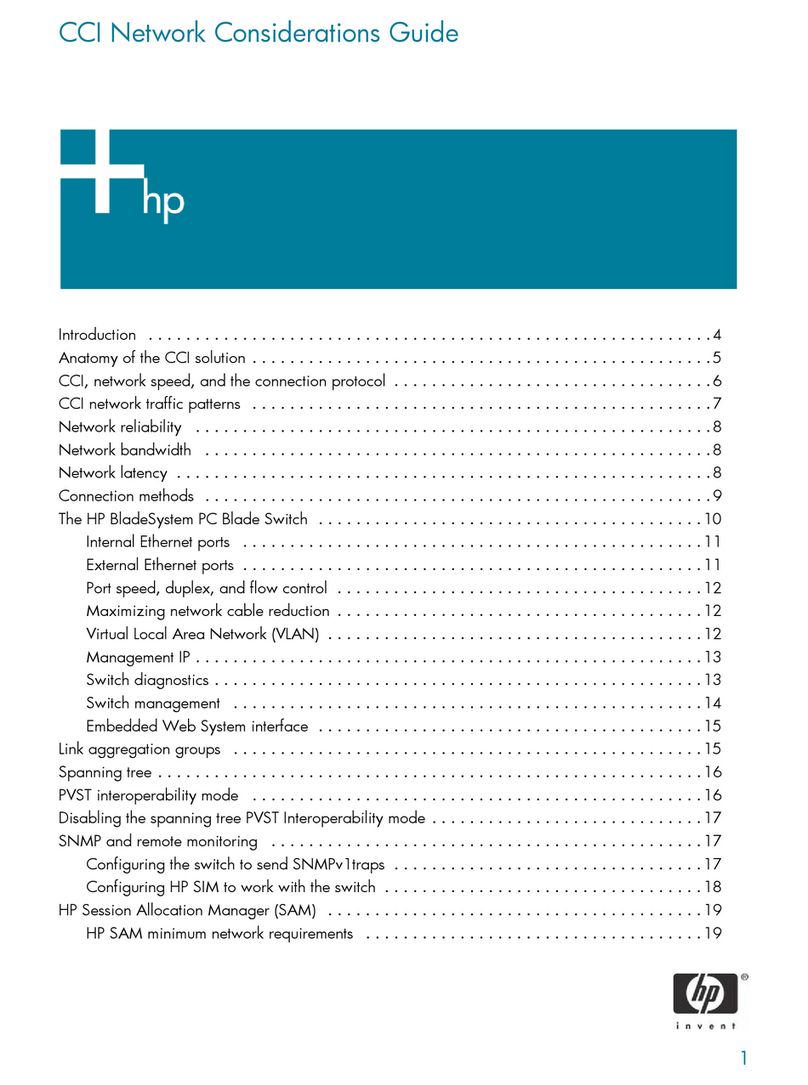
HP
HP Bc1500 - BladeSystem - Blade PC supplementary guide

Siemens
Siemens Opdima MAMMOMAT 3000 Service instructions
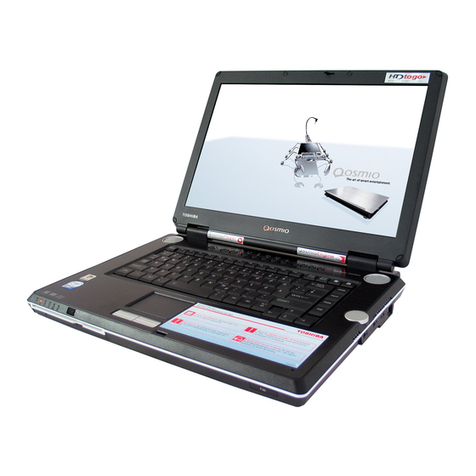
Toshiba
Toshiba QOSMIO F30 Series Maintenance manual
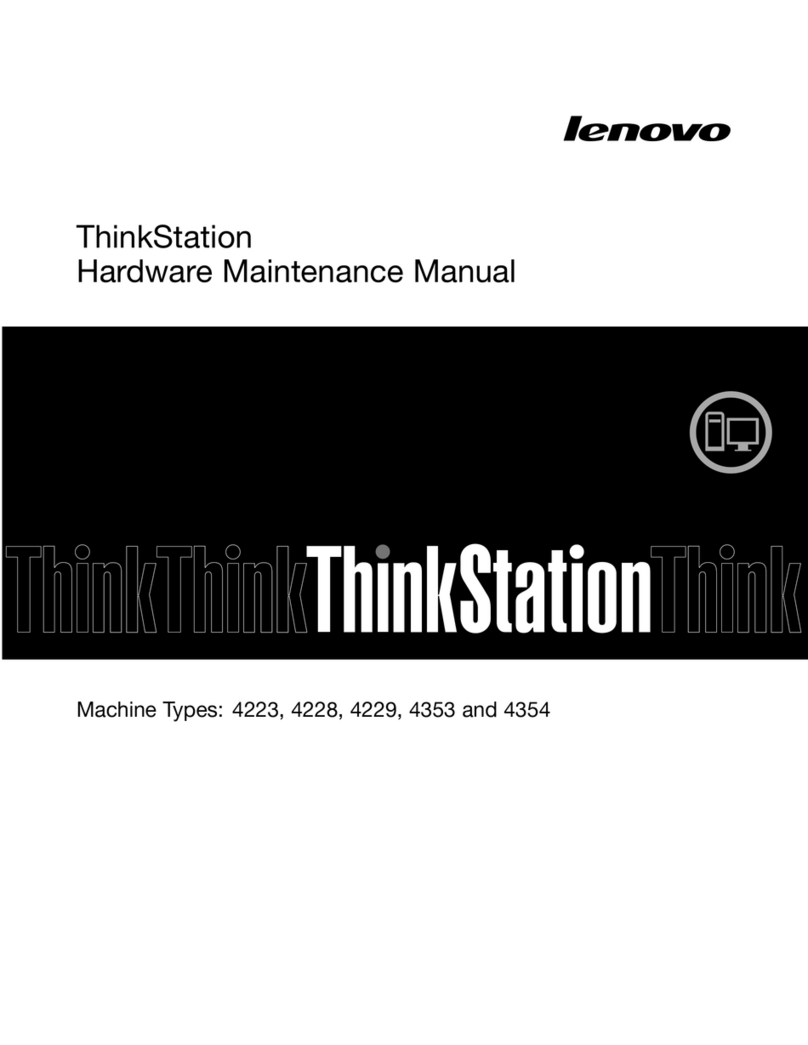
Lenovo
Lenovo ThinkSTaTion series Hardware Maintenance Manual
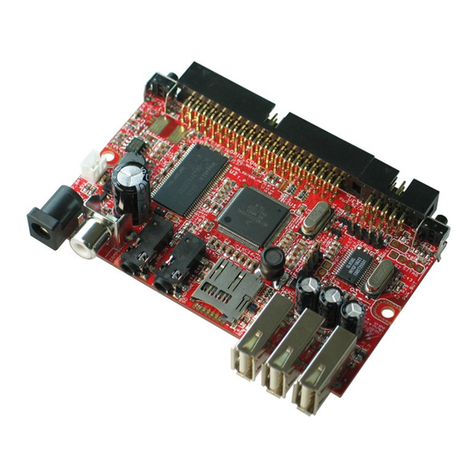
OLIMEX
OLIMEX OLinuXino-MINI user manual

Lenovo
Lenovo ThinkCentre M58e 7268 Hardware Maintenance Manual
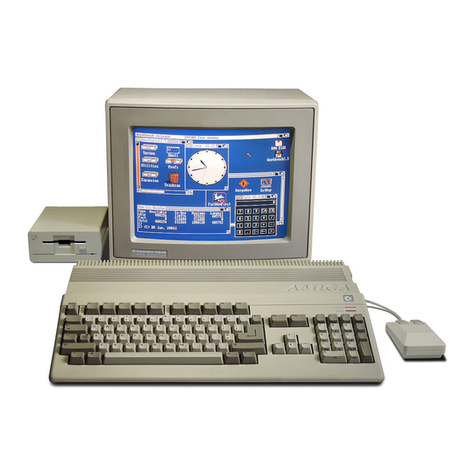
Commodore
Commodore Amiga A500 Technical reference manual
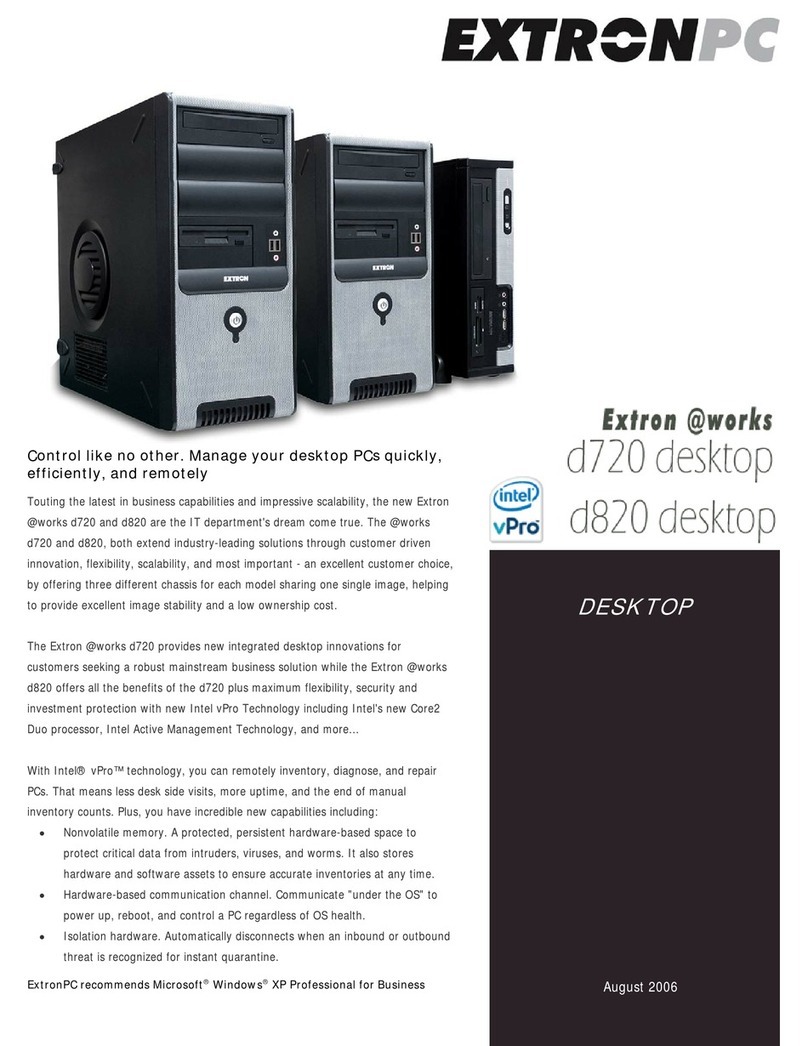
Extron electronics
Extron electronics DESKTOP d720 Desktop Technical specifications
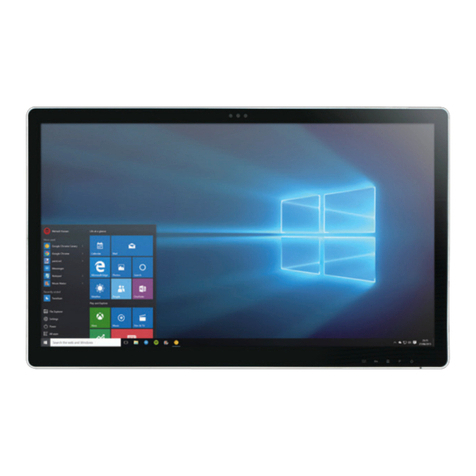
Tangent
Tangent Medix M24T Basic operation guide

Lenovo
Lenovo ThinkCentre M90n-1 Setup guide
